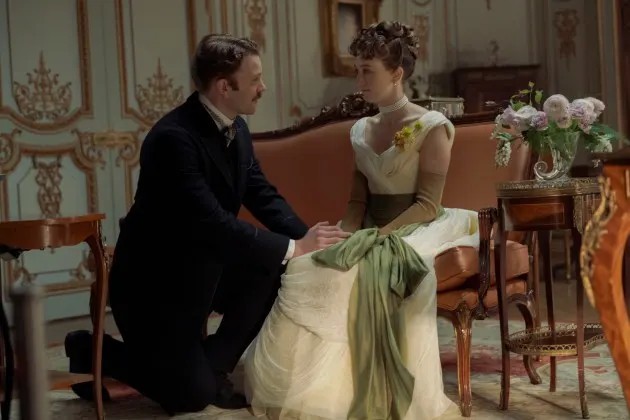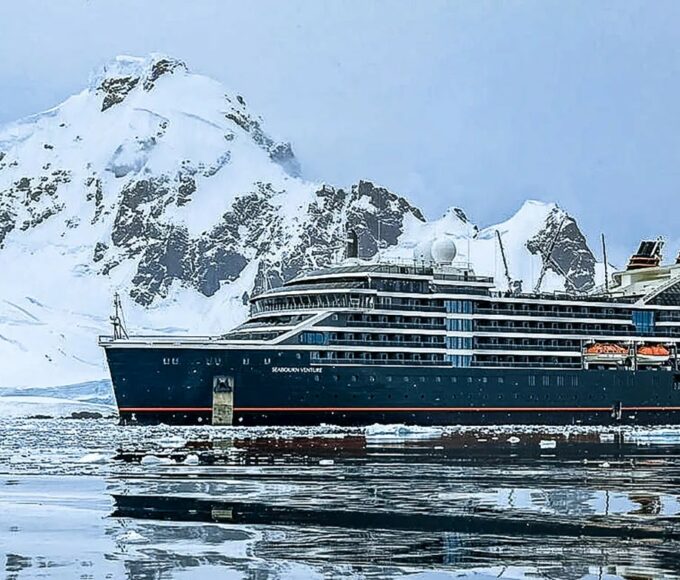Costume designer Kasia Walicka Maimone grew up with the novel “Anna Karenina” by Leo Tolstoy in her native Poland. The Russian classic is part of its “cellular structure” and has recently reread the novel, which takes place at the end of the nineteenth century.
This period has had a lasting impact on her and is also the time frame of the HBO series “The Gilded Age,” about the elite of New York City as they move from opera houses to elegant lunches and beyond, WWD says.
Costumes from “The Gilded Age”
Maimone has been working on this historical drama for over five years and her costumes are absolutely great, as she costumes characters inspired by famous New York families: Astor, Goelet, Livingston, Van Rensselaer and Vanderbilt.
“I live in New York and it’s a true celebration of the city and a way to get to know its history in depth,” she said in an interview, detailing that she works on 5,000 to 7,000 costumes per season with her team, which on a typical day consists of 65 people and can reach up to 200 on a major day of filming.
Season Three
Now, for the third season, Maimone had to look beyond the fashions and parameters of the city, as Gladys Russell, played by Taissa Farmiga, marries a member of the British aristocracy and becomes a duchess. Her character is inspired by Consuelo Vanderbilt’s marriage to Charles Richard John Spencer-Churchill, 9th Duke of Marlborough.
Gladys interacts with the Duke’s sister, Lady Sarah, played by Hattie Morahan, as she teaches her a new way of life in England and what it’s like to live in a country house.
“My obligation is to make sure that each character is different and that it is defined by what they wear. It was very obvious what to do with Lady Sarah, she had to be zipped and conservative. She [wears] a riding outfit with classic lines all the time, which contradicts Gladys’ latest fashions,” Maimone said.
Lady Sarah is dressed to the neck in dull tones and with pointed collars, while Gladys arrives at Sidmouth Castle wearing red and turquoise lace dresses, yellow jacquard, and blue-gray tartan. Gladys is a mirror of her mother, Bertha Russell, a fictionalized version of Eva Vanderbilt, a newcomer to New York society who makes her way to the top with extravagance and a somewhat bad taste for the old city guards. The Russell family costumes are bold and years ahead of their time.
“The old guard bought the same dresses from Casa Worth and then kept them in closets for two years until the seasonality subsided, but Bertha has no problem with this kind of bad taste because she’s happy to show it,” Maimone said.
What Gladys does when she arrives in England – in one scene, she wears stars with diamonds in her hair – is what Lady Sarah disapproves of. Maimone also understands that not everything is historically correct – there will always be an element of entertainment. “We amplify it a little more than it would have been in real life and that’s my job. There is a playful tinge to the material,” she explained.
Maimone, detailed fashion research
Her research on nineteenth-century New York fashion is as detailed as any history degree and spans texts, books, magazines, and art. Many of Gladys’ costumes are inspired by the paintings of American artist John Singer Sargent, who painted Consuelo Vanderbilt several times during his lifetime.
Maimone’s attention to detail is precise – even in secondary or isolated characters, such as Madame Dashkova, a spiritual medium, or Monica O’Brien, Bertha’s sister.
“He communicates with animals and wears a fox’s paw on his chest with which he speaks. It was simply a fabulous exploration of what can be done with a riddle,” she said, adding that in the case of O’Brien’s arrival in her old rags, it was all about instantly showing viewers that there is a history and a disconnect between the sisters before they come into contact with each other.
Nothing is wasted on the set of the film, not even the costumes.
Maimone reuses all the clothing for the house’s staff, and in the case of men’s clothes, she makes additional changes each season to adapt the costumes to the era.
This season, Agnes van Rhijn, played by Christine Baranski, redecorates many of her old dresses since she lost her fortune and is dependent on her sister, Ada Forte, played by Cynthia Nixon, who has become wealthy but does not change her costumes as much as she is still in mourning.
The costumes of the show reflect the story – many of the plays are made in New York, but some are specially designed in Europe for the main characters.
But New York seems to occupy a special place in Maimona’s resume. She costumed the 2005 film “Capote,” based on Truman Capote, and the crime drama “A Most Violent Year,” which depicts New York in the 1980s.
Who is Kasia Walicka Maimone
“I studied English in Warsaw, and when I graduated, I got quite lost and ended up living in New York, surrounded by this community of artists who were extremely passionate about what they were doing. It was a wake-up call because I had been making clothes since I was a kid, so I ended up going to FIT, where I realized that [fashion] was the most natural language I had, and it was the first time school made sense in my life,” she said.
Maimone worked in theater, dance companies, and operas at the time, and found her calling. “I quickly realized that my place is much more in storytelling than in fashion, because I’m very passionate about storytelling and discovering new worlds,” she said, recalling “Life Situations: Daydreams on Giselle,” a production she worked on with modern dance choreographer Donald Byrd in 1995.
All roads lead back to the opera or the stage for Maimone, who stages the costumes for the upcoming biopic “Springsteen: Deliver Me from Nowhere,” starring Jeremy Allen White as Bruce Springsteen.














Comentați?